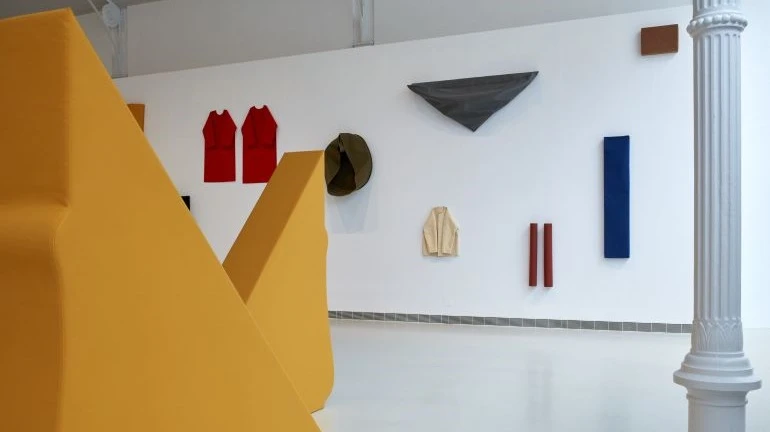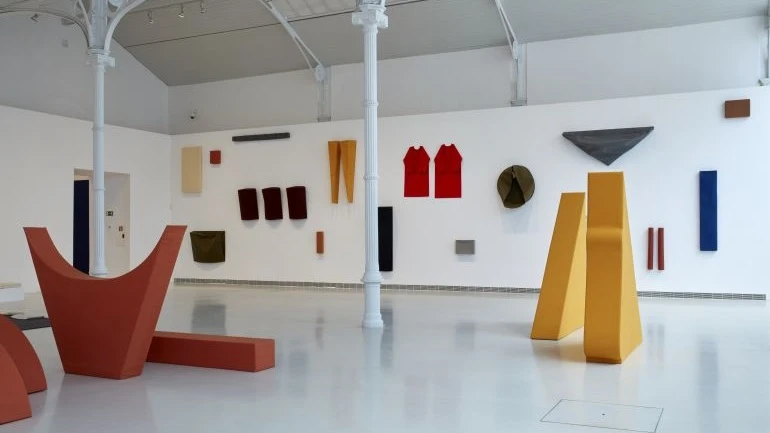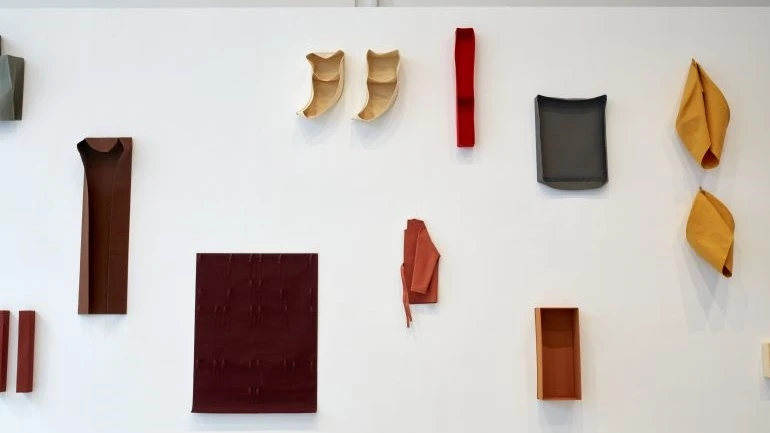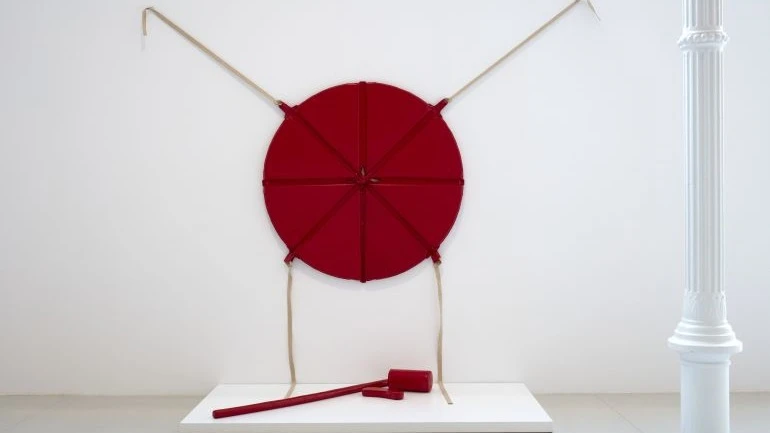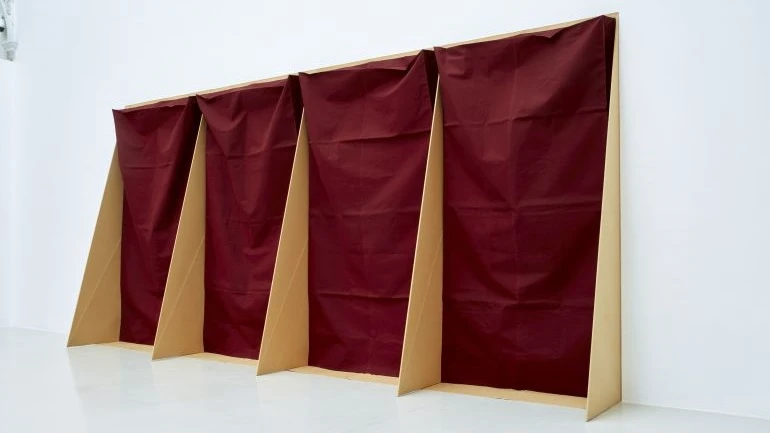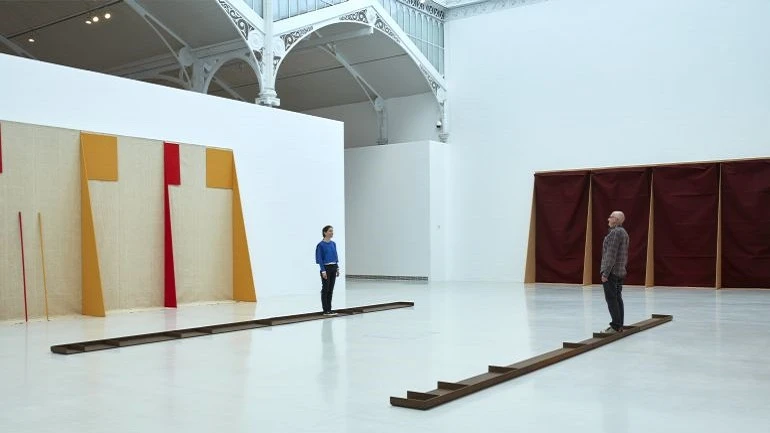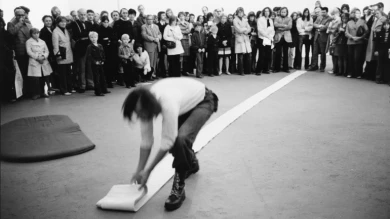Franz Erhard Walther
A Place for the Body
The work of Franz Erhard Walther (Fulda, Germany, 1939) spans a period from the late 1950s to the present day. It anticipates many issues that came to the fore in later art history, such as the condition of the artistic object (sculpture, its materials, techniques and uses) and the nature of the viewer as receiver and participant.
A Place for the Body, the first major anthological exhibition to be held in Spain on Franz Erhard Walther, presents a large number of sculptures, drawings, paintings, photographic documentation and archive material from the whole of his career. The exhibition is articulated around the two main themes of action and language.
Walther sees his sculptures as places for the body, inhabitable spaces that modify their appearance and significance in accordance with multiple formal solutions, and also with the actions (which the artist terms “activations”) suggested to the public by the artist and the works themselves. By these means, the artist reinterprets the definition of the artistic object, as well as the relationship between art and the viewer. For Franz Erhard Walther, the body in itself is already the sculpture.
Since the early sixties, Walther has been using textiles in the configuration of his works. Couture here functions as a constructive principle, rather as 20th century collage and assemblage do when they are conceived as processes for the approximation of art and life. Their undeniably tactile appearance, reinforced by a complex use of color, gives these works a ludic character replete with possibilities. In the artist’s own words, these textile prototypes become “a set of conditions rather than a finite object”.
Walther’s work with textiles and its use within the framework of an action might appear at first to bear a relation with the initiatives that emerged in Brazil in the 1960s, such as Hélio Oiticica’s Parangolés, Lygia Clark’s sensorial objects, or Lygia Pape’s Divisor. However, Walther’s activation should not be interpreted in a performative sense, since the action and movement are not intended for an audience. When the pieces are activated, the action implies a moment of presentation, not representation.
Together with action, language is another of the tools used by Franz Erhard Walther to redefine the work of art. This places him within a genealogy stemming from Mallarmé and extending up to concrete poetry. In his case, the artist resorts to his profound knowledge of the history of typography to represent the word as working material, from the drawings of his Wortbilder [Word Pictures] series to the reinvention of typographic forms revealed in his sculptural alphabets, volumes which invite the viewer to discover their legibility in space and interact with them.
Activations
While the exhibition remains open, there will be activations of the exhibition copies (2014) of several of the elements which make up 1. Werksatz [First Work Set, 1963-1969], an emblematic work requiring audience participation into which the artist poured many of the essential ideas of his career.
From 19 April to 30 June
Thursdays and Fridays, from 6pm to 9 pm.
Saturdays and Sundays: from 12pm to 2pm and 6pm to 9pm.
From 1 July to 9 September
Thursdays, Fridays, Saturdays and Sundays, from 6pm to 9pm.
Encounter on Franz Erhard Walther
Palacio de Velázquez, Parque del Retiro. September 9, 12 pm.
This encounter will have the form of a panel, in which curators Elena Filipovic, Christian Rattemeyer and João Fernandes will address the work of Franz Erhard Walther from different point of views. Along with the panel, the program will be complemented by a series of activations done by the artist himself.
Artists
Organised by
Museo Nacional Centro de Arte Reina Sofía
Image gallery
